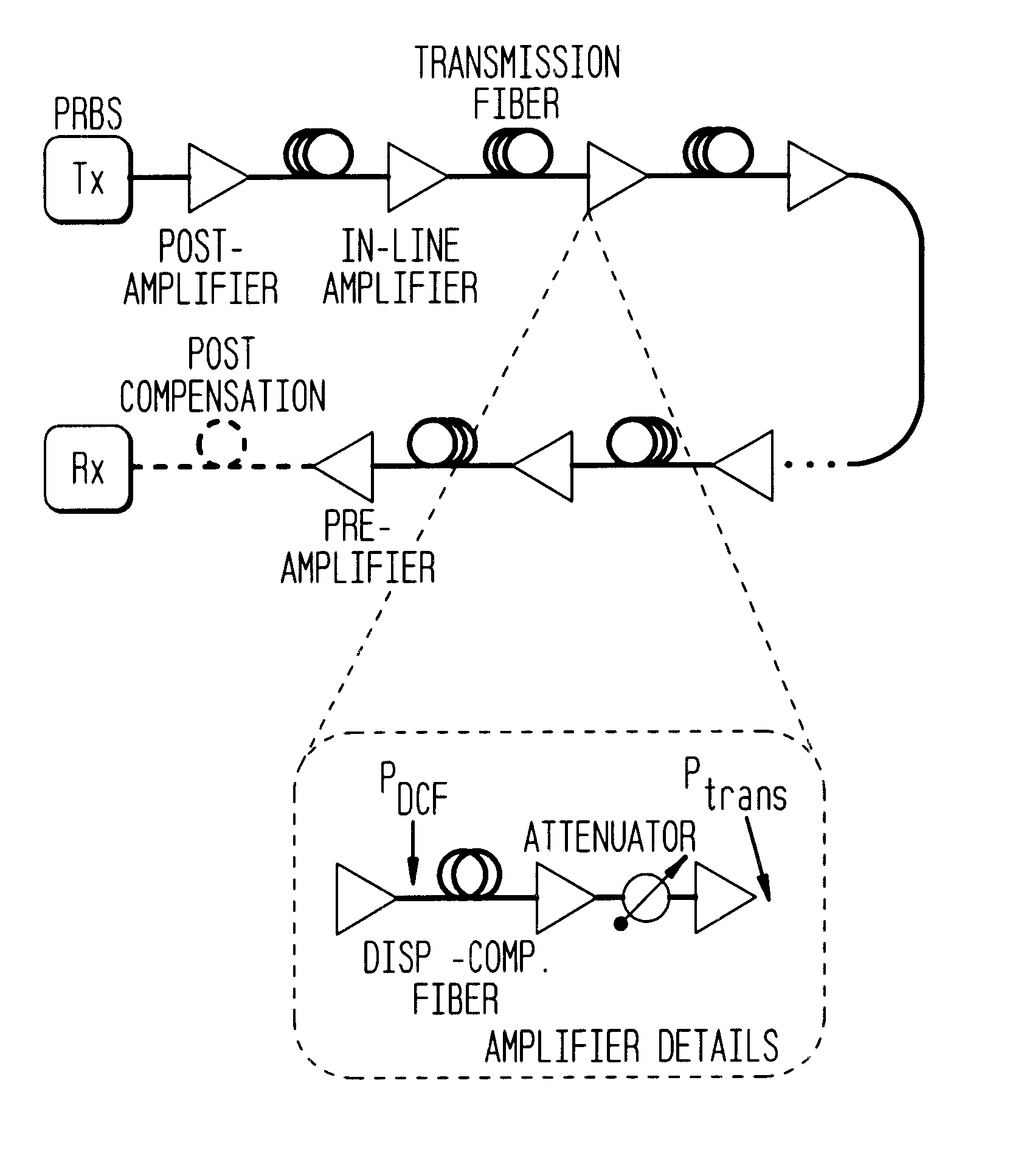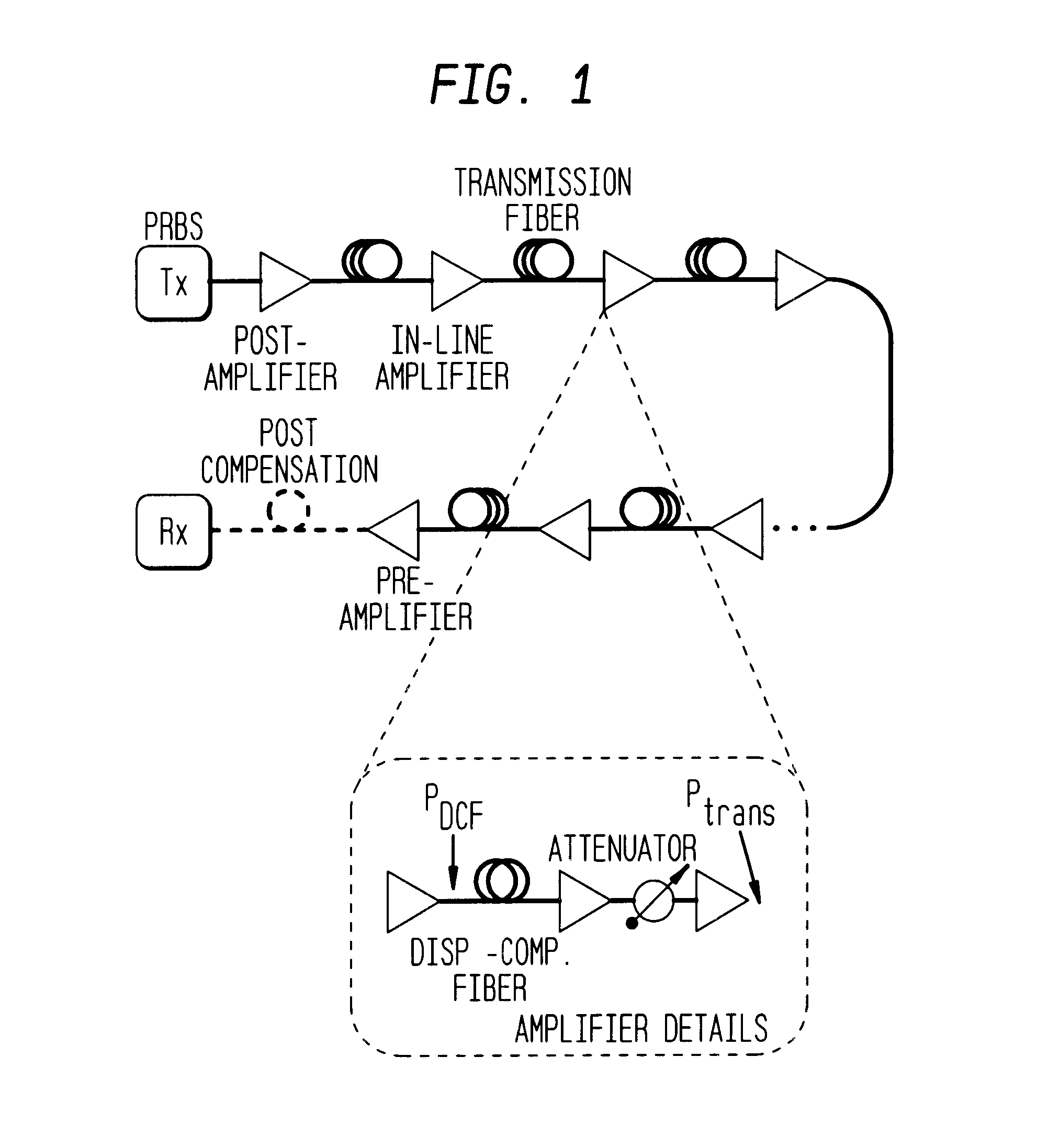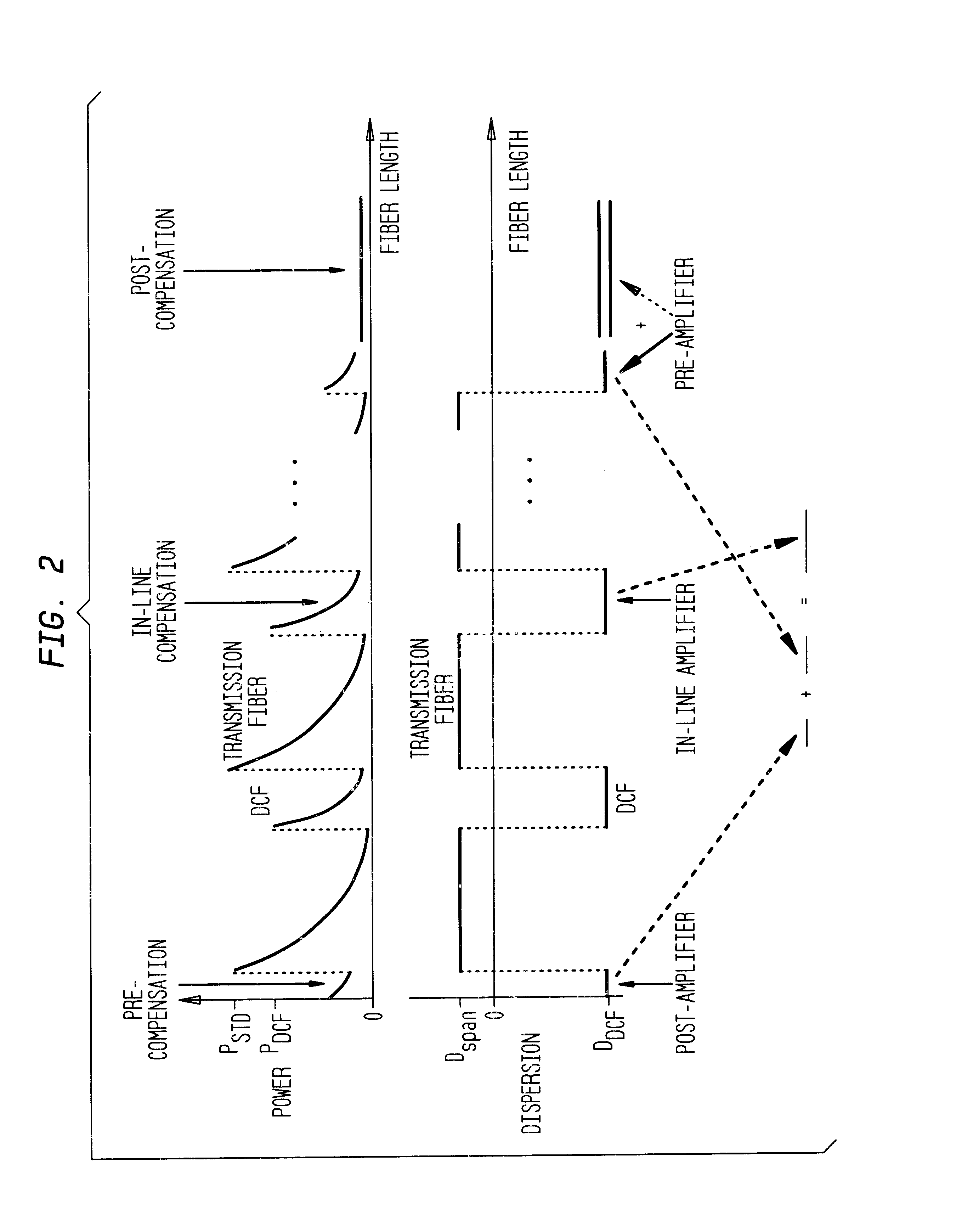Modulation format with low sensitivity to fiber nonlinearity
a modulation format and nonlinearity technology, applied in the field of fiber optic communication transmission, can solve the problems of inability to fully exploit the amplifier bandwidth, difficult nonlinear transmission, and inability to mature to that level of technology
- Summary
- Abstract
- Description
- Claims
- Application Information
AI Technical Summary
Benefits of technology
Problems solved by technology
Method used
Image
Examples
Embodiment Construction
The present invention is described by way of example using a terrestrial system consisting of 8 spans of 80 km each. The exemplary system herein is considered one of the most challenging from the point of view of nonlinear transmission for terrestrial systems. An experimental regime is presented that uses various 40 Gb / s transmission and above fiber types. Other fibers may similarly be used or incorporated, taking into consideration their respective characteristics. Two input average power levels of 8 and 12 dBm are considered by way of the illustrative example, for the system.
For 8 spans of 80 km, the nominal input-signal average power of a 10 Gb / s channel of commercial systems is 9.5 dBm. Thus, to provide 40 Gb / s would require an increase of 6 dB of the average power per channel (i.e. 6 dB of the Signal-to-Noise Ratio (SNR)). The higher power requirement at 40 Gb / s originates from the need to preserve the energy per bit to ensure error-free detection. The nominal signal input aver...
PUM
 Login to View More
Login to View More Abstract
Description
Claims
Application Information
 Login to View More
Login to View More - R&D
- Intellectual Property
- Life Sciences
- Materials
- Tech Scout
- Unparalleled Data Quality
- Higher Quality Content
- 60% Fewer Hallucinations
Browse by: Latest US Patents, China's latest patents, Technical Efficacy Thesaurus, Application Domain, Technology Topic, Popular Technical Reports.
© 2025 PatSnap. All rights reserved.Legal|Privacy policy|Modern Slavery Act Transparency Statement|Sitemap|About US| Contact US: help@patsnap.com



